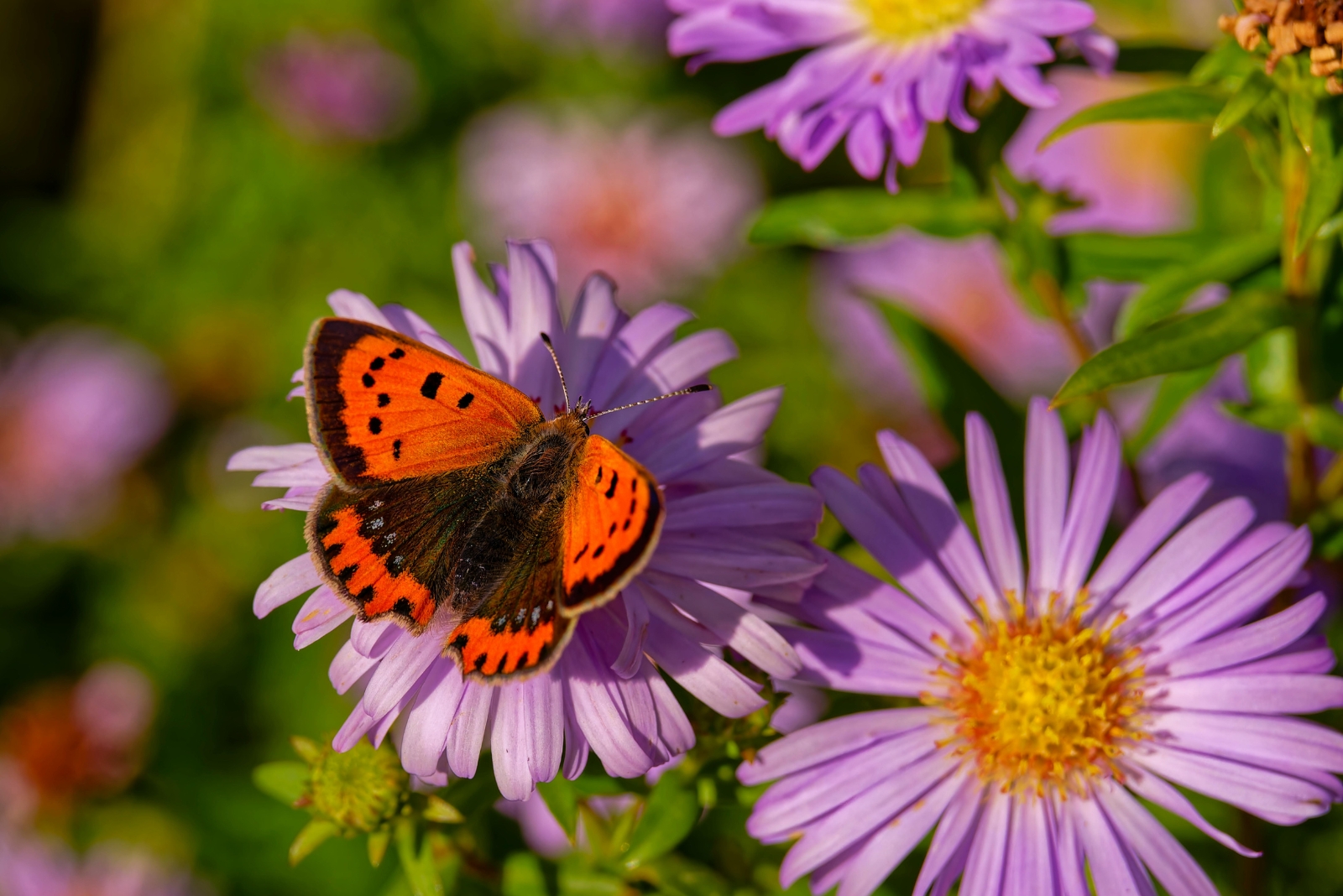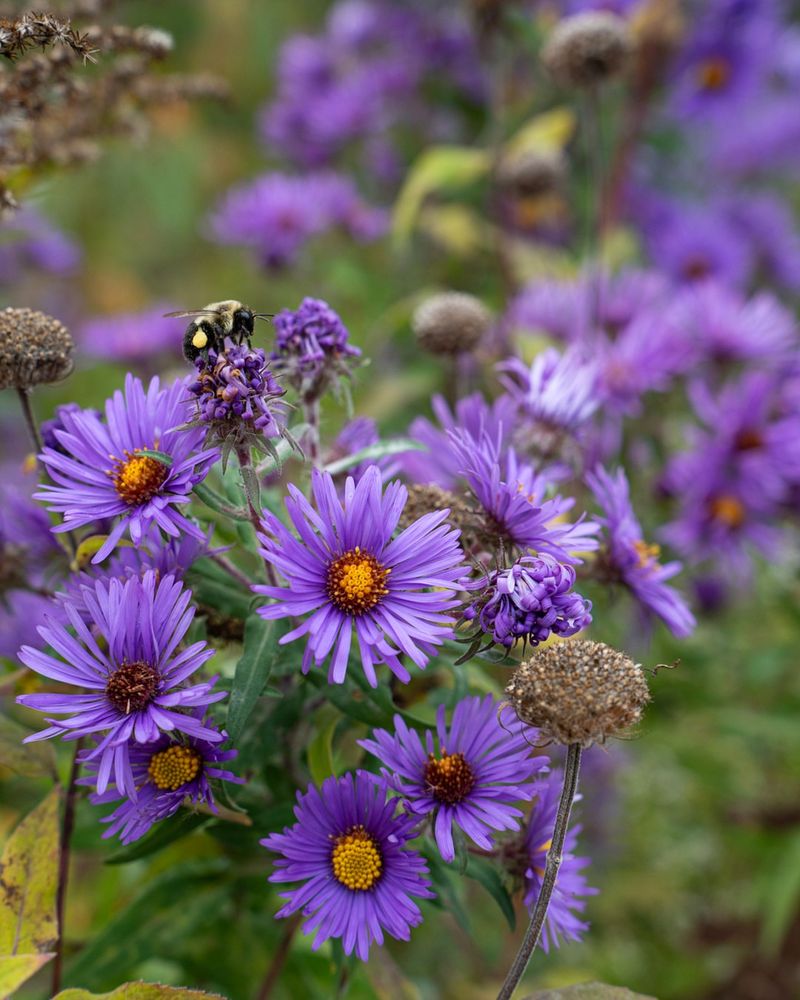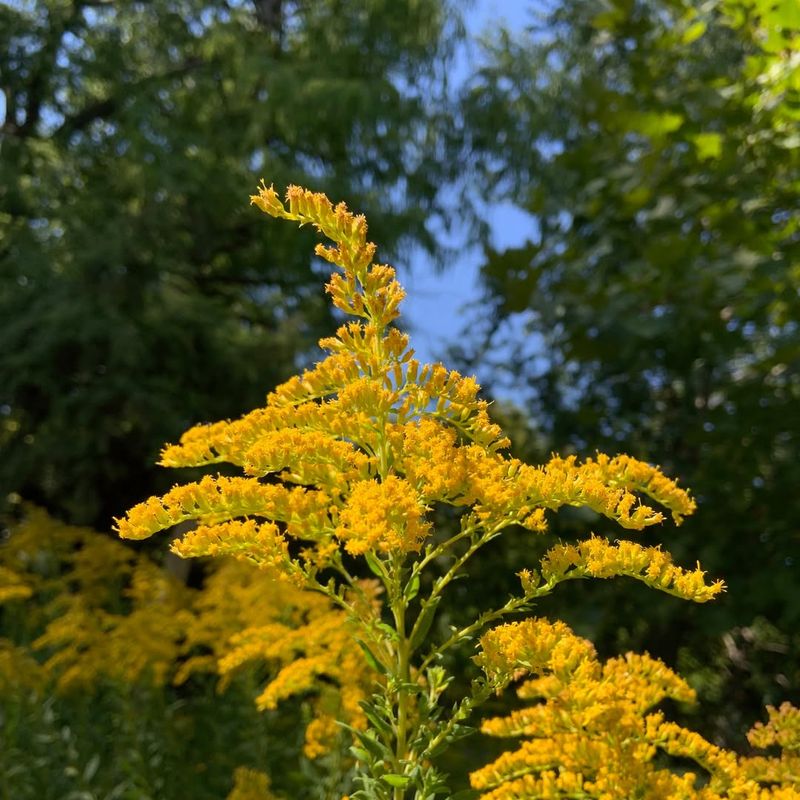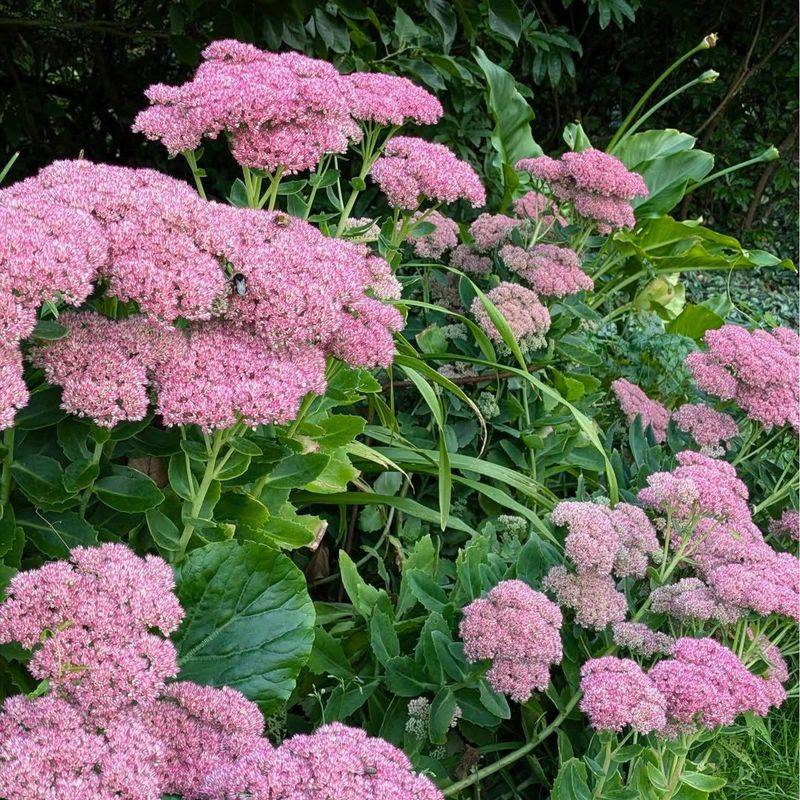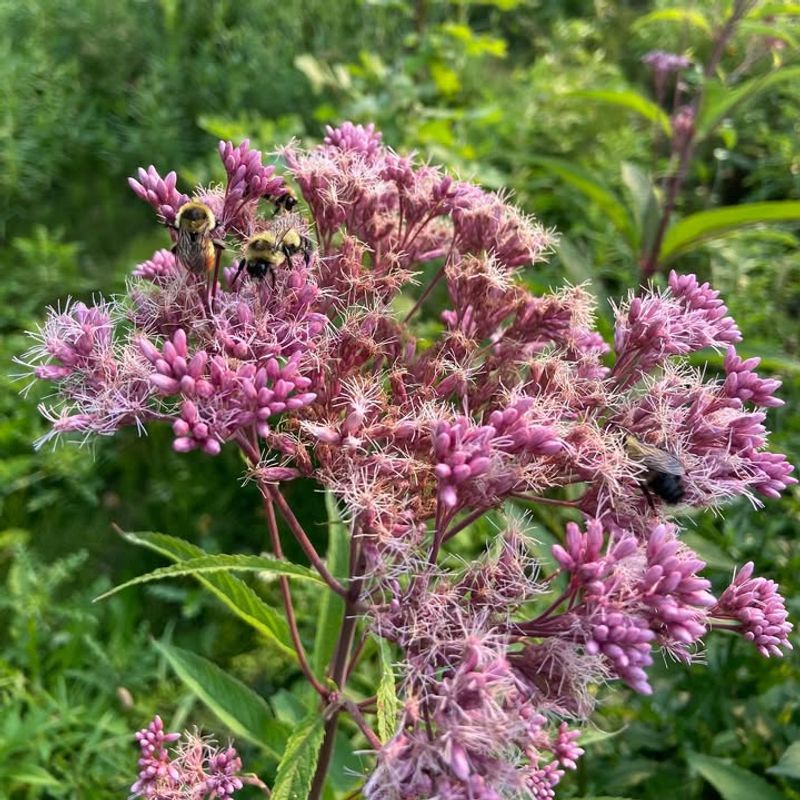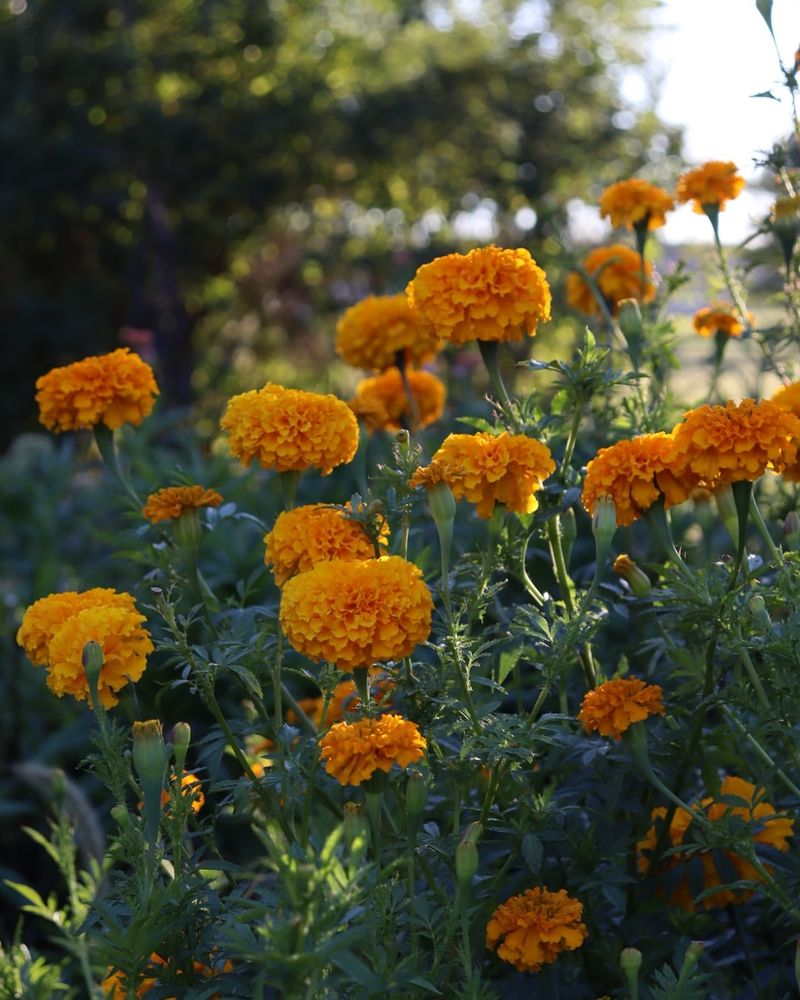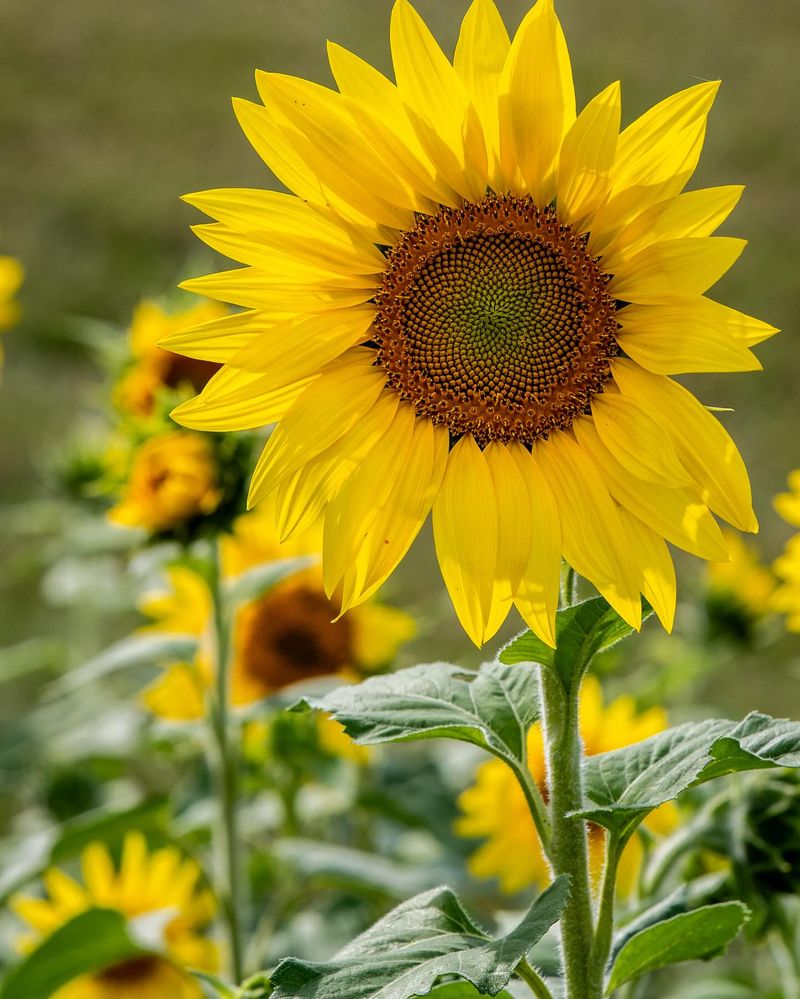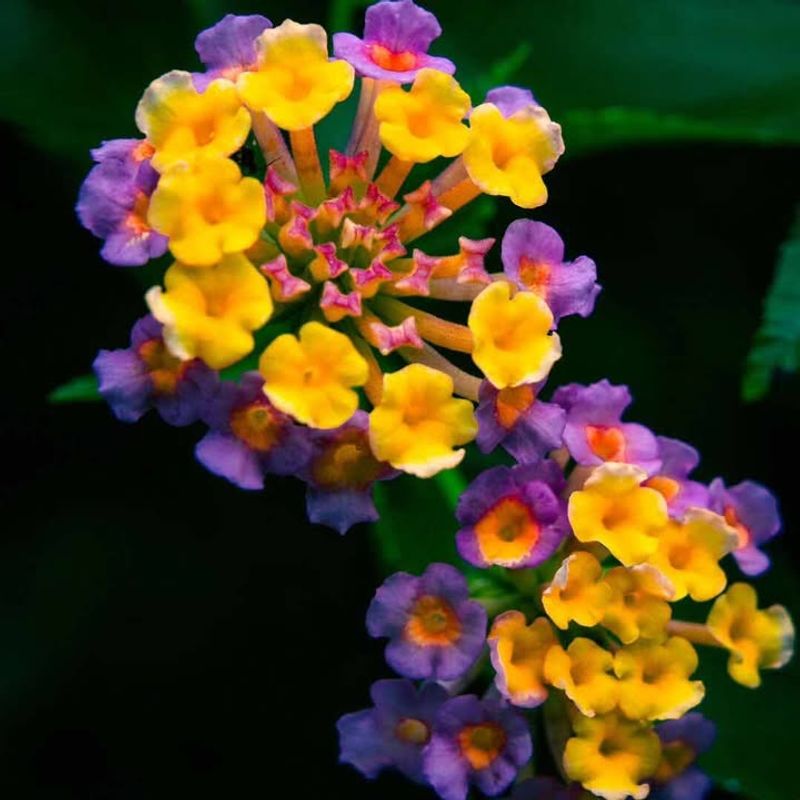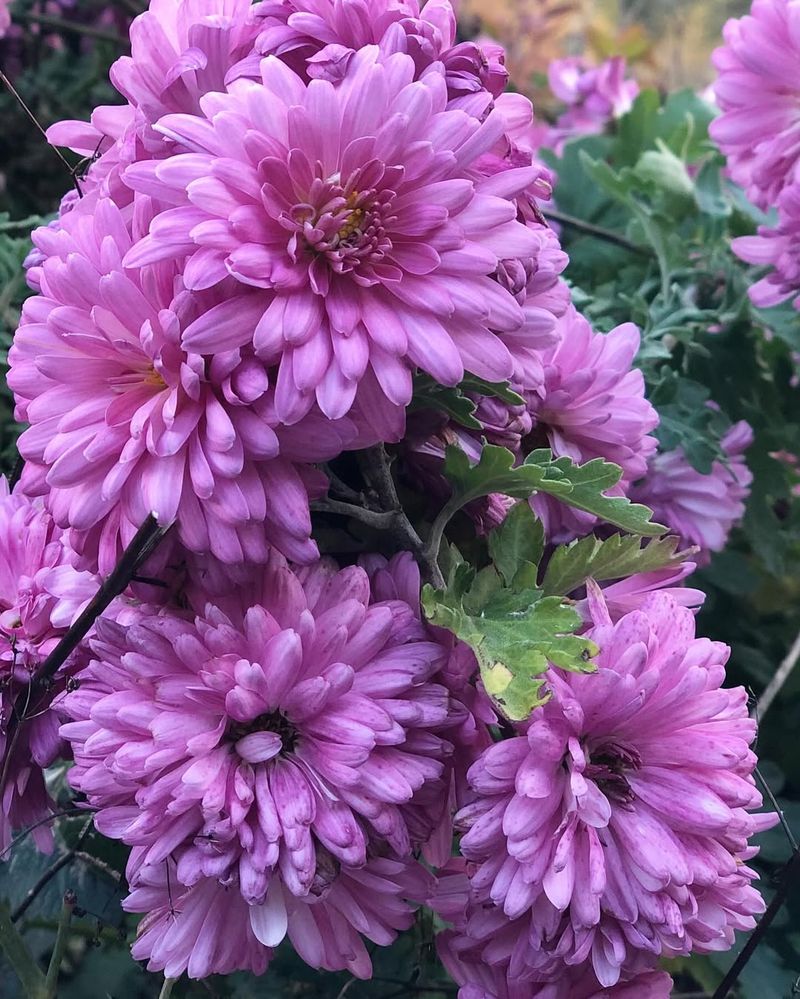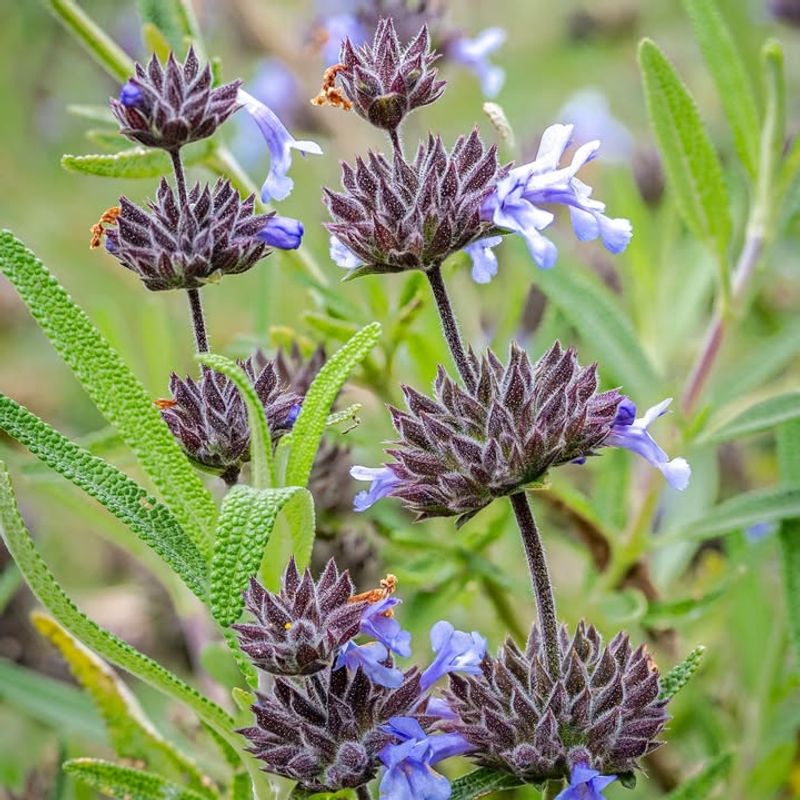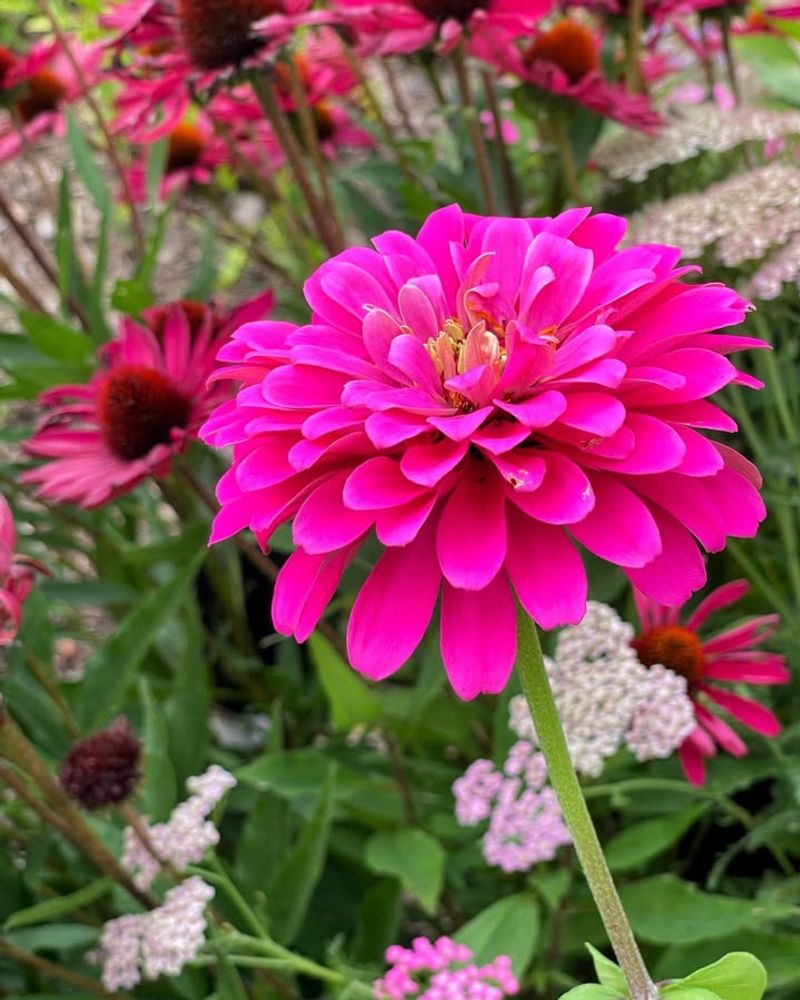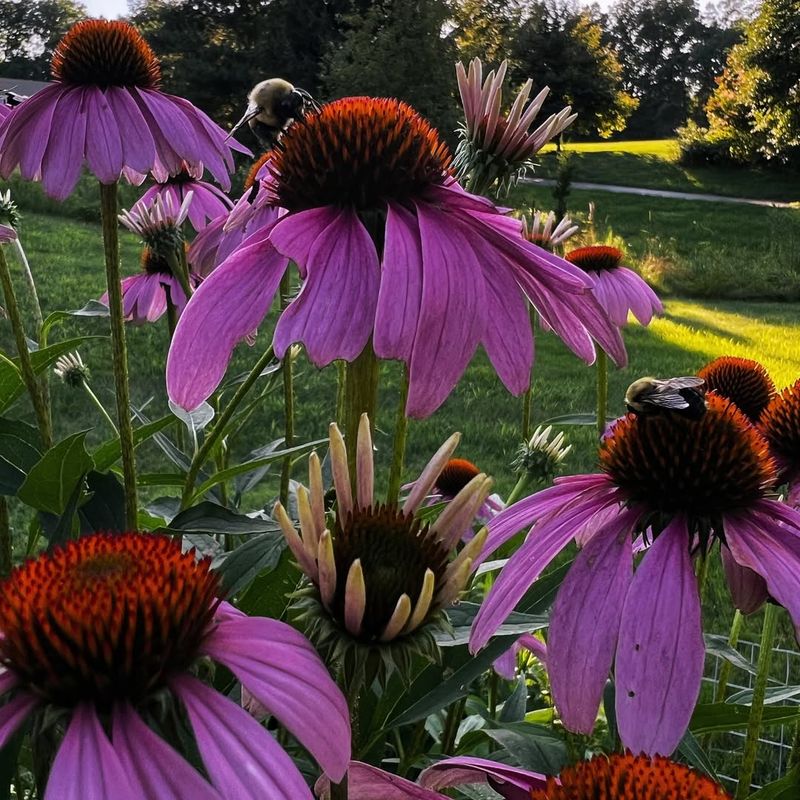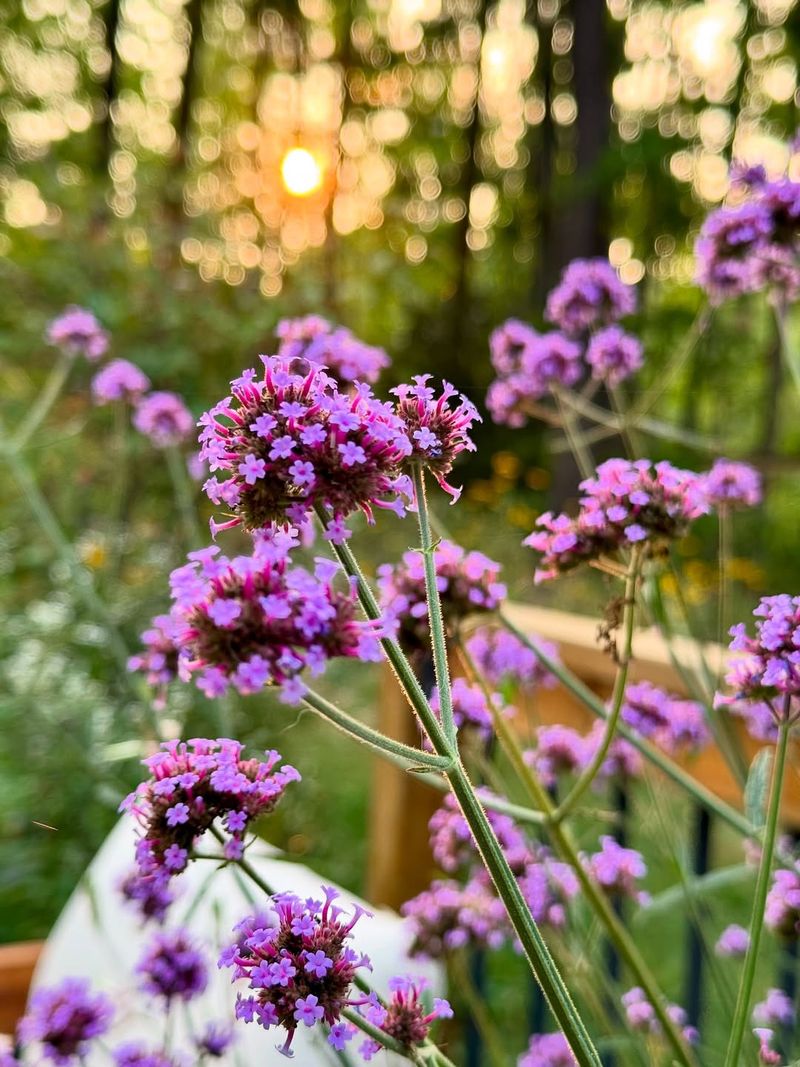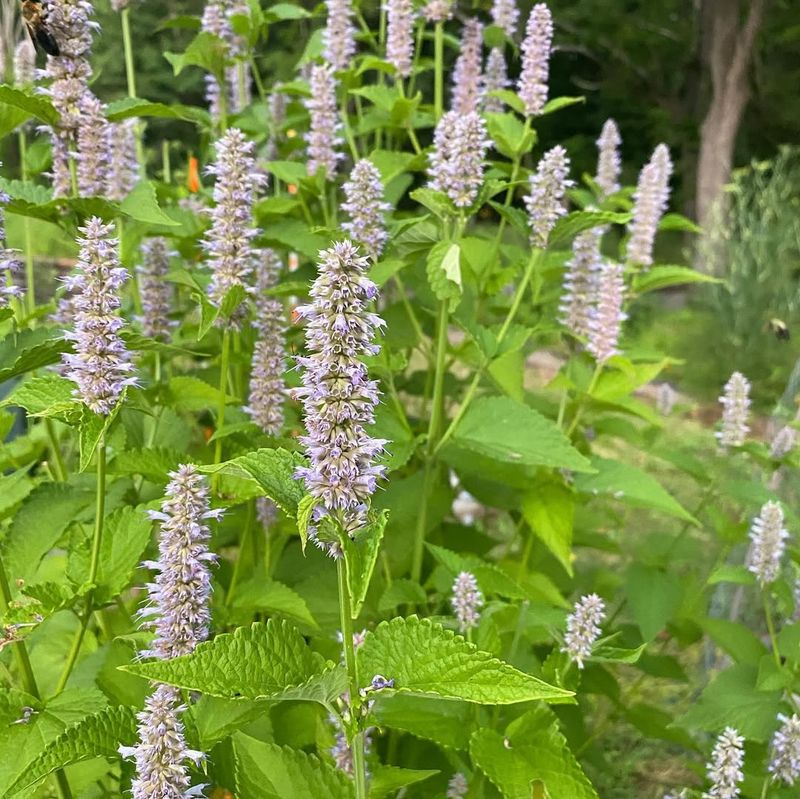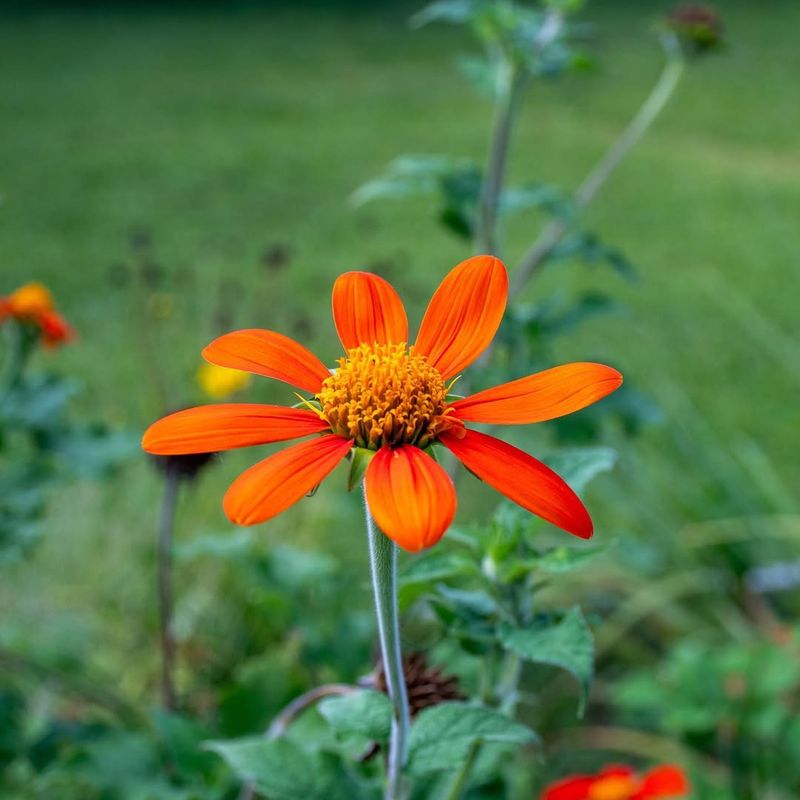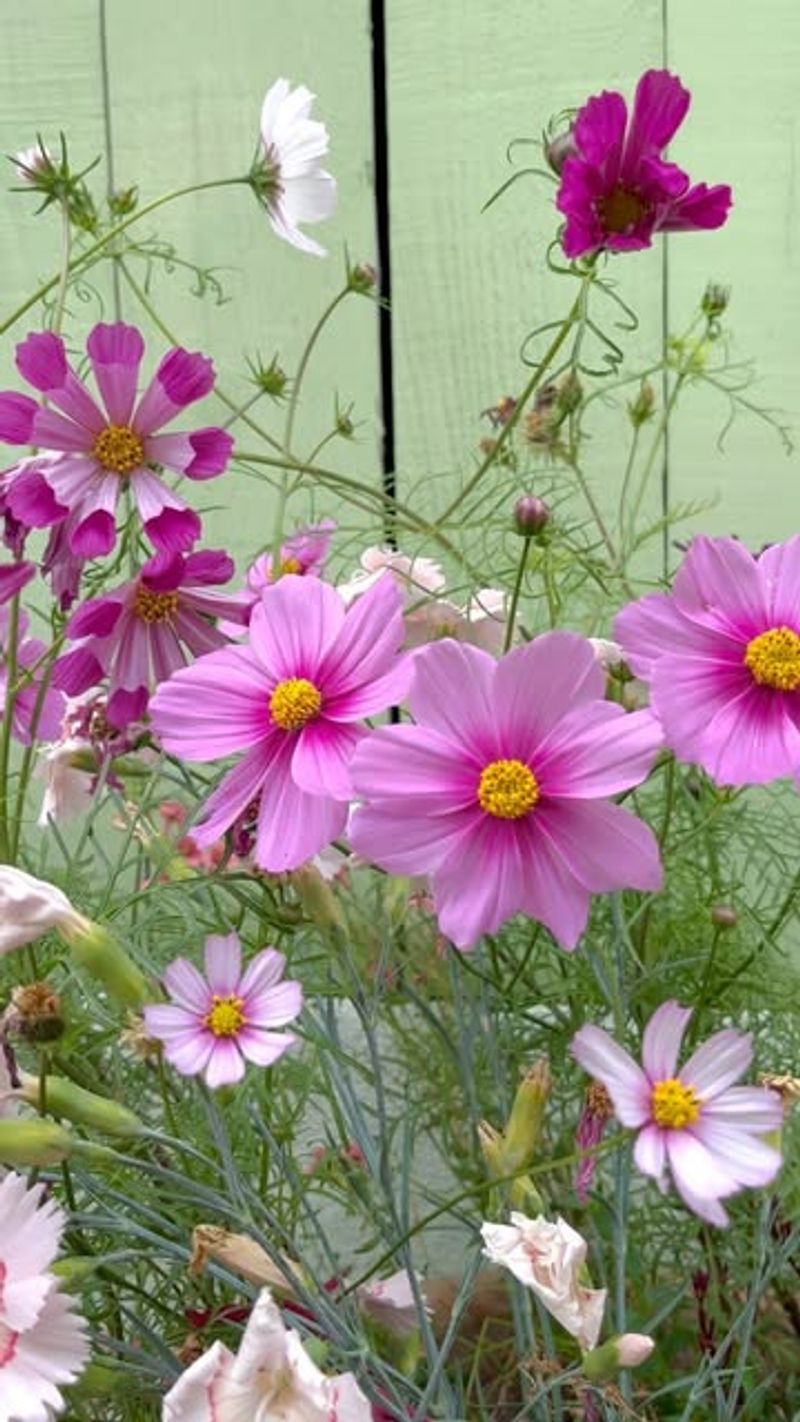As autumn days grow shorter and temperatures start to dip, many flowers begin to fade away. However, bees, butterflies, and other pollinators still need food to prepare for winter.
Planting late-blooming fall flowers in your North Carolina yard helps these important creatures survive and keeps your garden colorful through the cooler months.
1. Asters
With star-shaped blooms in shades of purple, pink, and white, asters light up gardens when most other plants have finished flowering. Native varieties thrive in North Carolina soil and require minimal care once established.
Bees absolutely love these daisy-like flowers because they produce abundant nectar late into autumn. Plant them in sunny spots with well-drained soil, and watch monarchs and bumblebees visit daily. Asters can grow two to four feet tall depending on the variety you choose.
2. Goldenrod
Bright yellow plumes of goldenrod create stunning displays from late summer through October. Contrary to popular belief, this native plant does not cause allergies—ragweed blooms at the same time and gets unfairly blamed.
Pollinators flock to goldenrod like it’s an all-you-can-eat buffet, especially monarch butterflies preparing for their long migration south. Plant goldenrod in full sun where it has room to spread. Its cheerful golden spikes provide crucial energy for traveling insects.
3. Sedum (Stonecrop)
Succulent leaves and clusters of tiny star-shaped flowers make sedum a unique addition to any pollinator garden. Autumn Joy and Autumn Fire are popular varieties that bloom from August through frost.
Butterflies and bees cover these dense flower heads throughout the day, making them look like living bouquets. Sedum tolerates drought exceptionally well and needs very little maintenance. The fleshy leaves store water, so you barely need to water once plants are established in your yard.
4. Joe-Pye Weed
Towering up to seven feet tall, Joe-Pye weed creates dramatic backdrops with its dusty pink-purple flower clusters. Legend says a Native American healer named Joe Pye used this plant as medicine, giving it its memorable name.
Swallowtail butterflies particularly adore these fragrant blooms that smell faintly of vanilla. Plant Joe-Pye weed in moist areas with partial shade to full sun. Its impressive height makes it perfect for privacy screens while feeding hungry pollinators simultaneously.
5. Marigolds
Cheerful orange and yellow blooms make marigolds a favorite among gardeners and pollinators alike. French marigolds and signet marigolds continue flowering until the first hard frost hits your area.
Bees visit marigolds for pollen while their bright colors attract beneficial insects to your yard. Plant them along garden borders or in containers for easy care and continuous color. Deadheading spent flowers encourages more blooms, extending the pollinator feast well into November in milder North Carolina regions.
6. Sunflowers
Nothing says autumn quite like towering sunflowers swaying in the breeze with their sunny faces following the light. Late-season varieties bloom in September and October, providing essential food when other sources dwindle.
Bees crawl across the large seed heads collecting pollen while goldfinches snack on ripening seeds. Choose varieties like Autumn Beauty or Moulin Rouge for stunning fall colors. Sunflowers grow quickly in full sun and well-drained soil, reaching heights from three to ten feet tall.
7. Lantana
Clusters of tiny tubular flowers in rainbow combinations make lantana irresistible to butterflies and hummingbirds. Colors shift as flowers age, creating a multicolored effect on each cluster.
Butterflies visit lantana constantly throughout the day, making your garden feel like a nature sanctuary. In coastal North Carolina, lantana may survive winter as a perennial, while inland gardeners treat it as an annual. Plant in full sun with good drainage, and enjoy blooms until frost arrives unexpectedly.
8. Chrysanthemums
Garden mums burst into bloom just when you need color most, offering shades from deep burgundy to bright yellow. While often sold as temporary decorations, hardy mums planted in spring become reliable perennials.
Bees appreciate the pollen-rich centers, though some double-flowered varieties hide their pollen beneath layers of petals. Choose single or semi-double flowers for better pollinator access. Plant mums in well-drained soil with at least six hours of sunlight. Pinch back stems in early summer for bushier plants and more flowers.
9. Salvia (Sage)
Spikes of tubular flowers in shades of blue, purple, red, and white make salvias magnets for hummingbirds and long-tongued bees. Many varieties bloom continuously in North Carolina from summer through the first freeze.
Hummingbirds hover at each flower, sipping nectar while their wings blur with motion. Salvias tolerate heat and drought exceptionally well once established in your garden. Plant them in full sun with average soil, spacing them about 18 inches apart. Their aromatic foliage also deters deer and rabbits naturally.
10. Zinnias
Easy to grow from seed, zinnias provide endless blooms in nearly every color imaginable throughout fall. Kids love planting these fast-growing flowers because they sprout quickly and bloom within weeks.
Butterflies cover zinnias like living confetti, especially preferring single-flowered varieties over fancy doubles. Plant successive crops every few weeks for continuous blooms until frost. Zinnias need full sun and well-drained soil but forgive occasional neglect. Cut flowers regularly for bouquets, which actually encourages more blooms to form on your plants.
11. Coneflowers (Echinacea)
Purple coneflowers feature distinctive raised centers that look like spiky orange domes surrounded by drooping petals. Native to North America, they’re perfectly adapted to North Carolina’s climate and soil conditions.
Bees love landing on the prominent center cones to collect pollen and nectar. Even after petals fade, goldfinches perch on seed heads eating throughout winter. Plant coneflowers in full sun to partial shade with well-drained soil. They’re drought-tolerant once established and rarely need fertilizer or special attention from gardeners.
12. Verbena
Low-growing verbena spreads across garden beds, creating carpets of purple, pink, red, or white flower clusters. Each cluster contains dozens of tiny flowers that pollinators adore.
Butterflies flutter from cluster to cluster, rarely leaving verbena patches once they discover them. Heat and humidity don’t bother these tough plants, making them perfect for North Carolina summers that stretch into fall. Plant verbena in full sun with good drainage, and deadhead occasionally to encourage fresh blooms. They work beautifully in containers, hanging baskets, or as ground covers.
13. Anise Hyssop
Fragrant spikes of purple-blue flowers smell like licorice when you brush against the leaves. Anise hyssop belongs to the mint family and blooms for months without stopping.
Bees visit these flowers so frequently that you’ll hear constant buzzing around the plants. Both leaves and flowers are edible, making delicious tea with a sweet, anise-like flavor. Plant anise hyssop in full sun to partial shade with average soil. It self-seeds readily, so you’ll have free plants appearing each spring without any effort required.
14. Mexican Sunflower (Tithonia)
Brilliant orange flowers the size of your palm glow like flames atop tall, sturdy stems. Despite its tropical appearance, Mexican sunflower thrives in North Carolina’s fall weather.
Monarch butterflies migrating south stop at these flowers to refuel for their incredible journey to Mexico. Plant Mexican sunflowers in full sun with well-drained soil, giving them plenty of space since they grow four to six feet tall. Their hollow stems and large leaves require staking in windy locations to prevent toppling over during storms.
15. Cosmos
Delicate petals surrounding yellow centers wave gracefully on thin stems above feathery foliage. Cosmos continue blooming abundantly until frost, shrugging off cool nights that stop other flowers.
Bees and small butterflies appreciate the easy landing pad that cosmos flowers provide. Plant cosmos in full sun with poor to average soil—they actually bloom better without fertilizer. Tall varieties may need support, while dwarf types work perfectly in containers. Deadheading spent blooms keeps plants flowering continuously through October and sometimes into November.

